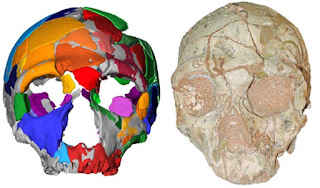 |
| Arriving in the main square, Santiago |
Our Pilgrimage
Pilgrim, who
calls you?
What secret
power draws you? (Anon.)
Santiago was the destination of
one of the great pilgrimages of the Middle Ages. Pilgrims set out from all over
Europe and converged as they crossed the Pyrenees and entered Spain. Then the Way
of St James led to the great cities of Burgos and Leon and on to the shrine
in the Field of the Star (Campus Stellae – Compostela) where the bones
of St James were believed to lie and now a magnificent cathedral stands.
In early July, together with my
son John, we walked as a group of 24 pilgrims from Sarria to Santiago de
Compostela in northwest Spain, a distance 70 miles. King Alfonso IX died at
Sarria in 1230 while on pilgrimage to the great shrine and his remains lie in
the Cathedral of St James the Great. Our walk took us through beautiful
undulating Spanish countryside with shady oaks, quiet country roads, sleepy
villages with small stone churches and through forest track in the eucalyptus
woods.
 |
| The Mount of Joy where medieval pilgrims first saw the spires of Santiago Cathedral |
We visited the Romanesque
fortress-church of San Nicolas (13 c) in Portomarin. In 1962 the valley was
flooded by the creation of the Belesar reservoir. The entire town was moved to
higher ground on the west bank. The stones of the façade of the Church of San
Pedro (1182) and those of the -church of San Nicolas were numbered to aid
reconstruction when the town was moved. At Lavacolla early pilgrims washed
themselves in the river before their arrival in Santiago. At the Mount of Joy
(Monte Del Gozo), medieval pilgrims first saw the spires of Santiago Cathedral.
 |
| Stone carving of Our Lady Santiago |
One of the few carved stone
images depicting Our Lady when she was about six months pregnant can be seen
decorating an old building in Santiago Old Town. She is shown with her left
hand touching her stomach.
In the Middle Ages, Santiago,
together with Rome and Jerusalem, were regarded as ‘great pilgrimages’.
Santiago was, and still is, one of the largest centres of pilgrimage in the
Christian world. The cathedral is the reliquary of the Apostle St James. The
first church over the tomb of the Apostle was built by King Alfonso II in
around 830-840.
The Apostle James
The Apostle James was one of
Jesus’ closest disciples and was present at some significant events in the
Gospels including: The Healing of Jairus’ Daughter (Mark 5:21-24a and 35-43);
The Transfiguration (Luke 9: 23-36) and in the Garden of Gethsemane (Mark 14:
32-42). He was killed by King Herod. The supposed tomb of St James discovered
in 813 led to increase in the number of pilgrims to Santiago and the building
of the original church. In 899 a new cathedral was consecrated and in 1075 the
second cathedral was begun. The third cathedral was started in 1100. In 1181 a
Papal Bull confirmed Santiago’s status as a major pilgrimage site.
After 1300 the number of pilgrims
visiting Santiago declined due to the Black Death, wars and schism. In 1879 excavations
at the cathedral revealed the reburial site and relics of the Apostle. In 1884
the relics were authenticated by Pope Leo XIII and replaced under the high
altar. In 1948 pilgrimage and Holy Year were publicised outside Spain and the
number of pilgrims grew. Pope John Paul II visited Santiago in 1982 and again
in 1989. Pope Benedict XVI’s official visit to Spain in 2010 began at the
cathedral.
 |
| Fording a stream in Galicia |
My lasting image of the Camino is
walking along narrow country lanes, through small stone-walled fields, with a
profusion of foxgloves on either side all seeming to point towards Santiago de
Compostela. When the Lord scattered those seeds, did He think of a pilgrim
like me, I wondered? I would like to think that he did!








